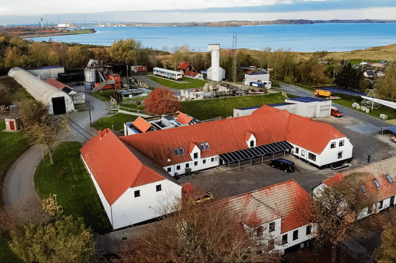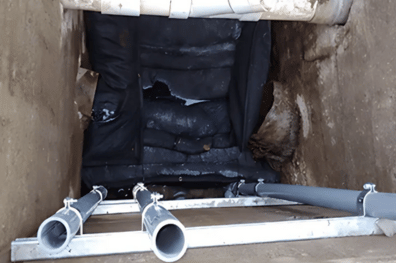A collaborative study at a fire fighting training facility in Korsør, Denmark has achieved remarkable success in treating PFAS contamination, setting new standards for water treatment technology.
The Challenge
The site faced significant PFAS contamination from firefighting foam (AFFF):
- Initial Contamination Levels:
- PFAS (22 list): 36,000 ng/l
- PFAS (4 list): 28,000 ng/l
- Need to meet strict Danish regulatory standards:
- PFAS (22 list) < 100 ng/l
- PFAS (4 list) < 2 ng/l
- Complex mix of contaminants including PFOA, PFOS, PFNA, & PFHxS
The Solution: Integrated Treatment Approach
The team implemented a comprehensive treatment strategy:
- Core Treatment Components:
- BAM Ultra technology
- Complementary nutrient addition
- Active aeration system
- 18-week treatment duration
- Implementation Process:
- 500 liters of process water collected
- BAM material homogenization
- Continuous aeration
- Natural bioremediation support
Exceptional Results
The treatment achieved unprecedented success:
- Immediate Results (4 weeks):
- 99.99% PFAS reduction
- Met all Danish regulatory standards
- Only treatment method to reach project goals
- Long-term Performance (18 weeks):
- No contaminant rebound
- Continued PFAS reduction
- Sustained regulatory compliance
Key Success Factors
Several elements contributed to the exceptional outcomes:
- Integrated treatment approach
- Extended monitoring period
- Support for natural bioremediation
- Optimal BAM material integration
- Continuous aeration maintenance
Scientific Significance
The study demonstrated several breakthrough findings:
- First treatment to meet strict Danish standards
- Proof of complete PFAS remediation possibility
- Validation of bioremediation enhancement
- Long-term treatment stability
Global Implications
This project’s success offers:
- Validated methodology for PFAS treatment
- Template for meeting strict regulations
- Scalable approach for other facilities
- Evidence of complete PFAS removal possibility
This groundbreaking study provides a proven framework for addressing PFAS contamination at fire training facilities worldwide, with implications for both groundwater and drinking water treatment.



